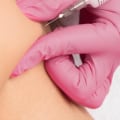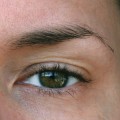There are no long-term or life-threatening side effects related to botulinum toxin treatment for any cosmetic indication. In addition, the risk of potential complications can be reduced by a thorough analysis of the patient's medical history and the use of the appropriate dose and technique for the injection. The immediate side effects of injections can be flu-like symptoms that are accompanied by nausea and headaches. But drooping eyelids, drooling, and asymmetry are caused by the toxin's unintended effects on the muscles surrounding the drug's target areas.
These side effects may take several weeks to improve as the toxin wears off. While botulinum toxin is generally considered safe, its widespread use and ever-expanding indications pose safety concerns. This study aimed to review serious and long-term adverse events associated with the therapeutic and cosmetic use of botulinum toxin. Serious adverse events included dysphagia, respiratory compromise, generalized muscle weakness, marked bilateral ptosis, pseudoaneurysm of the frontal branch of the temporal artery, necrotizing fasciitis, sarcoid granuloma, Fournier's gangrene, and cervical kyphosis. Death was attributed to botulism or anaphylactic shock. In conclusion, botulinum toxin can cause serious adverse effects, which are more common after therapeutic use, but which can also be noticed after cosmetic use.
A thorough understanding of the anatomy of the muscles treated and the pharmacology of the drug is essential to avoid serious adverse events. This article aimed to review the serious and long-term adverse events of the therapeutic and cosmetic use of botulinum toxin. After repeated use, Botox could also make your skin appear thinner. In an interview with Byrdie, Dr. Patricia Wexler, MD, a dermatological surgeon, said that while this is not typical, if you start using Botox in your early 20s, there could be a greater chance of this happening to you.
It's not likely, but it can happen. The National Institutes of Health Consensus Conference in 1990 included botulinum toxin as a safe and effective therapy for the treatment of adductor spasmodic dysphonia, oromandibular dystonia, and cervical dystonia. Patients receiving Botox treatments close to the eye may be at risk for eye-related side effects, such as irritation and dryness. These side effects should be discussed immediately with a doctor, as they can lead to permanent vision loss and eye problems. Although it's the same toxin that causes botulism (a life-threatening form of food poisoning), its effects vary depending on the amount and type of exposure. According to the authors, only 25% of patients did not experience any side effects during the course of treatment. So what are the long-term effects of Botox? Well, the drug has only been around for about 40 years, so there's not much information about long-term effects.
Temporary side effects of injecting Botox around the eyes include pain, drooping eyelids, and fat lumps. However, widespread diffusion of botulinum toxin is possible, especially after long-term therapeutic or cosmetic use. Botulinum toxin resistance due to the development of antibodies to the toxin has also been reported as a long-term adverse event of therapeutic use of botulinum toxin. However, spontaneous reporting systems cannot be used to determine the incidence of adverse events since adverse events are not reported and the patient's exposure or length of time the drug was on the market has not been taken into account. The therapeutic use of botulinum toxin was introduced approximately two centuries ago when Justinus Andreas Christian Kerner recognized its effect on skeletal muscles and parasympathetic function. This raises the possibility that botulinum toxin will be transported in a retrograde manner similar to tetanus toxin and may cause centrally mediated side effects. But how does Botox work? And are there any long-term effects I need to consider before scheduling that appointment? Keep reading to learn about both good and bad long-term effects associated with Botox.


